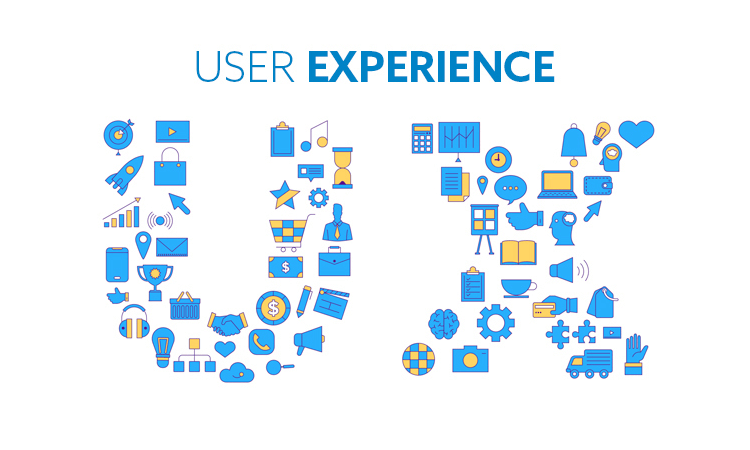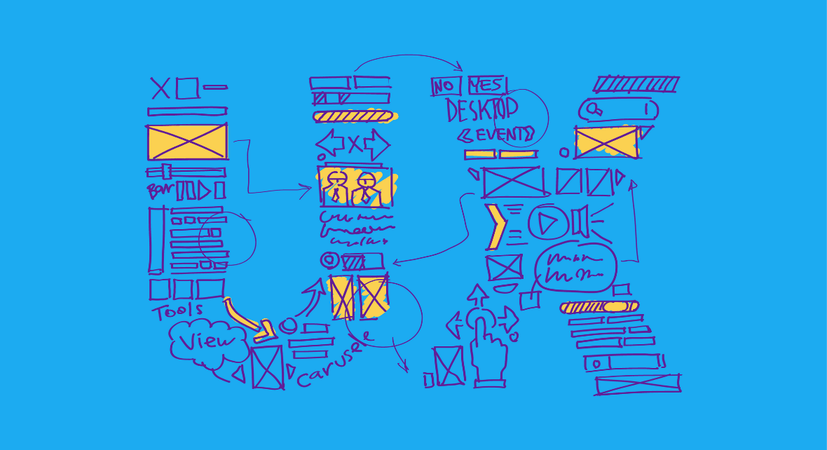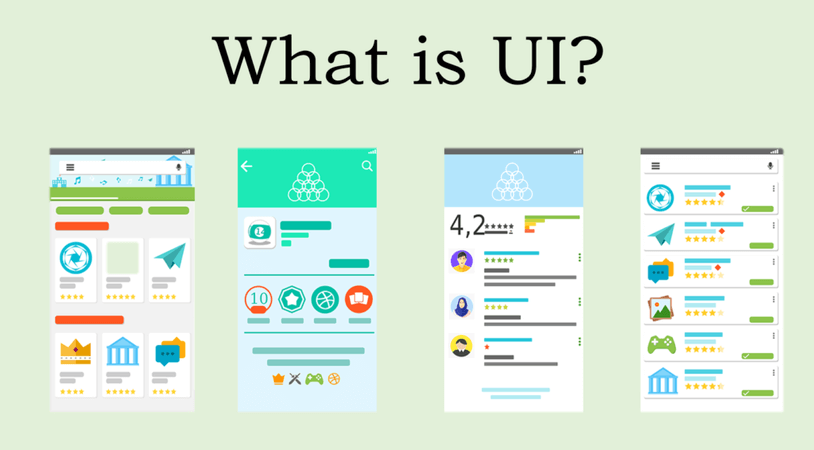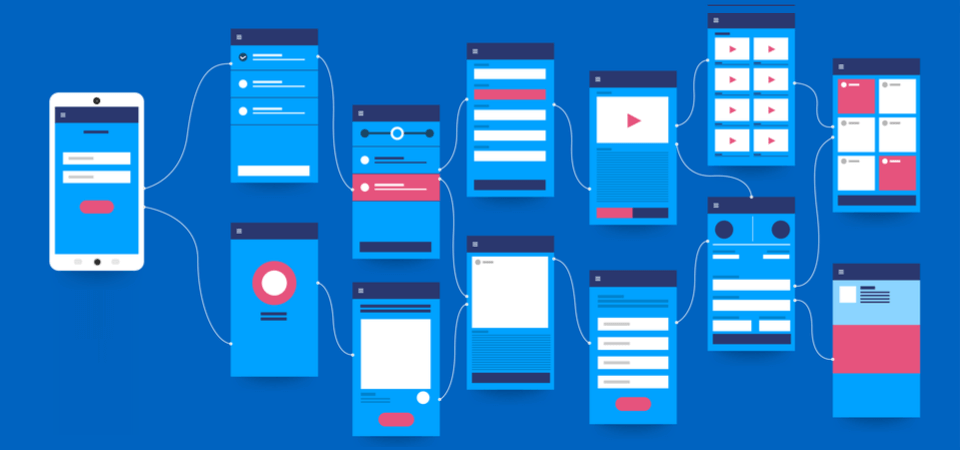
Why UX and UI Are Necessary When Creating a Website
Posted on Feb, 22, 2022 I EliseYou spend a lot of time and effort running your business as a small business owner. In addition to professional growth, finances, administration, planning, advertising, branding, and even customer support, most owners have a wide range of responsibilities.
There has been an increase in online customers, and your website demands the same level of care and attention as any other vital area in your organisation.
You may save time and effort by working with an enterprise or a freelance designer to provide the digital experiences your consumers require. The question is, how do you know whether your potential team member has the necessary expertise and will incorporate all of the critical parts of company web design?
UX and UI design are two of the most essential disciplines in web design. Don’t confuse them since they sound alike. They’re distinct and add to the overall look and feel of your website, as well as to how clients go through your marketing funnel.
A successful company website relies heavily on the use of both UX and UI, and this article will explain how these two elements interact.
Let’s get started, shall we?
Using UX and UI Together in Web Design

For the majority of small business owners, their website serves as a digital portfolio that highlights their company’s mission, vision, values, and offerings.
However, did you realise that 75% of your website’s trustworthiness is determined by its design? You should be familiar with both UX and UI design in order to guarantee that your website is driving your company objectives.
Let’s start with the basics: what do these two acronyms imply and how do they apply to your company’s website?
Meaning of UX:
Users’ interactions with goods, systems and services are studied and planned in this branch of web design. Functionality, style, accessibility, and the overall impression are all included. It’s all about making a beautiful website. When it comes to UX, designing a house’s blueprint is a good analogy.
Meaning of UI:
Basically, it’s all the areas where a user and a computer program come together. Using the interface, a user may interact with the application. It is up to the UI designer to ensure that your site is easy and straightforward for users to use. We prefer to think of user interface design as a home’s furniture, paint, and other small elements.
UX and UI are two distinct design disciplines that work together to produce a great product. As far as web design is concerned, UX and UI are inseparable components that cannot exist without one other.

In light of these disparities, it is critical to portray these professions as having their own distinct organisational responsibilities. A customer’s emotional response to your website is captured by UX, but UI considers the architectures and even the most minute aspects.
UX is concerned with the user’s experience, whereas UI design is concerned with the user’s experience. In the end, UX is a concept rather than an actual sensation that promises a smooth, flexible, and efficient website. When it comes to UI, the design stage is at the heart of everything that makes up the UI.
Why it’s time to invest in user experience (UX) design?

In the post-pandemic age, UX design may be the best investment. In recent modifications to Google’s algorithm, user experience (UX) design has been strongly weighted in the rankings, and visitors and potential customers pay close attention. It’s official: Your web’s user experience is now a ranking factor.
You should put money into user experience design for the following reasons:
1. Enhance the overall satisfaction of the client
The best UX design focuses on anticipating your users’ requirements and wishes and then making it as simple as possible for them to accomplish their goals on your website. As a result of a well-designed UX, customers are more likely to engage with your company and take action, such as signing up for your newsletter or taking a survey.
2. Reduce the amount of time spent on each page
Users are more likely to stay on your site if they are greeted with a good UX design and a clear path to relevant content.
3. Boost online sales with eCommerce
A well-designed user experience (UX) on an e-commerce website can lead to fewer abandoned shopping carts and more sales. Conversions and revenues go up 400 percent when the user experience is responsive and focused on the consumer. It is possible to have a high-quality eCommerce website built for you by a web design studio, or you can pick an eCommerce website like WordPress or Wix that gives you the ability to modify your design and increase your sales.
4. Reduce customer service expenses
When customers can easily locate the answers to their problems without having to use forms, chats, calls, emails, or social media, an effective UX layout may save a significant amount of money on customer support. It’s easier to find information if the website is dynamic and user-friendly.
5. Boost signals for ranking up the search results
The quality of the user’s experience is becoming a significant factor in search engine results. UX design must be a focus in your SEO and company growth strategy since Google values mobile-friendly layout and page load rates as important ranking factors.
Website Owners’ Guide to the Best User Experiences (UX)

Your content needs a place to live, and that’s what UX design is all about. Before you can begin construction, you must determine how many rooms, doors, and windows you will need.
- Make a list of all the material on your current site and what you need to add before beginning any website redesign job. You don’t want to create a design and then try to squeeze your content into odd locations; instead, the content should influence the database structure.
- Consider the content flow while brainstorming ideas for a website overhaul. Before creating a workable UX prototype, have a look at the existing and future content. The transitions between pages and the overall website flow are taken care of via a content-centric strategy.
- Knowing the goals of your website’s visitors is an excellent starting point for developing an effective user experience plan. You need to know why they’re on your site, what they want to accomplish, and how to assist them in doing so swiftly. If you want to run a pop-up poll on your website, for example, you might use a phone or chatbot. You’ll be able to talk to interested users and get their comments much more easily this way.
- UX design is all about developing a good outcome, and usability is the key. A strong UX approach may include the removal of certain unnecessary design components in order to accommodate speed, convenience, and simplicity. Often, this strategy also takes into account the demographics of the target audience. UX design is all about making things easy for people to make decisions and get around.
- Lead forms on your website should not ask for excessive information upfront. It’s difficult for a user to convert because of the work and desire to give personal information required to fill out each area. Form submissions, call-to-actions, and other features should be pared down if you’re just getting started. More writing and sharing makes the process more tedious for a person. UX design is all about requesting only the information necessary to have a dialogue with your consumer.
Why it’s time to invest in user interface (UI) design?

The design of your website’s user interface (UI) serves as a link between your site’s visitors and the fundamental design components that assist users in navigating and making decisions on your site.
Investing in UI design is worthwhile for the following three reasons:
1. Branding
The choice of colour, icon style, and font in your user interface (UI) speaks volumes about your brand, therefore it’s important! You want your website’s UI to quickly convey your company’s personality and tone.
2. Conversion
The UI sets the tone, and it’s up to the UI to convert visitors into customers. In contrast, a bad user experience can impede conversions, while a perfect user experience encourages consumers to take action — contact the company, download material, or purchase something. Visitor conversion rates tend to be greater for companies with user interfaces that are both friendly and exciting.
3. Retain customers
A strategic UI design not only brings in new consumers but also helps a company keep its existing ones. A well-designed UI incorporates aspects that elicit a pleasant or positive emotional response in the user’s subconscious, encouraging them to return.
UI Guidelines for Webmasters

While UX design focuses on building a foundation for your web pages, UI design focuses on painting, furnishing, and stocking your new home with all of the necessary elements.
By making the house visually attractive, UI design expands on the idea put out by the UX. As a result, your guests will feel more at ease, productive, and entertained throughout their time with you.
- Before beginning any work on your website’s design or overhaul, make a conversion path map to ensure that users can find their way across the site at any point along the process. With this strategy, you can move consumers along the sales funnel naturally, which is critical for both B2B and eCommerce firms.
- Brand positioning and brand image standards are the best tools for UI designers (or anybody else who creates visual content for your organisation) to use. Consistent designs may be achieved by using this method. Website features like blog post templates and internal pages should have an on-fleek UI design layout, too. You can maintain a proper, on-brand aesthetic across all of your pages, from the homepage to product details and bespoke landing pages.
- Design the UI with attention spans in mind. Modern people skim stuff rather than read it, with an attention span of only 8 seconds. As a result, the vast majority of the material you provide on your website gets skimmed over rather than read. For this reason, simple design features such as straightforward scrolling vs clicking alternatives, basic interfaces, simple headlines, and clearly defined CTAs are needed to help the person reading.
- Vibrant graphics, movies, and elements that slow down page loading times should be avoided in UI design. Minimalism is always a winner in UI design, as well as in search engine optimization (SEO).
- Experimentation may backfire when it comes to UI design. CTAs, shortcut keys, and menu designs are recognisable to your clients and frequent visitors since they are used to seeing them on every website they visit in a day. In the absence of a compelling need to illustrate your brand’s revolutionary thinking, readjusting the set pieces is of little use. You may lose a conversion if you make any alterations to the procedure that isn’t in keeping with the usual.


Leave a Reply